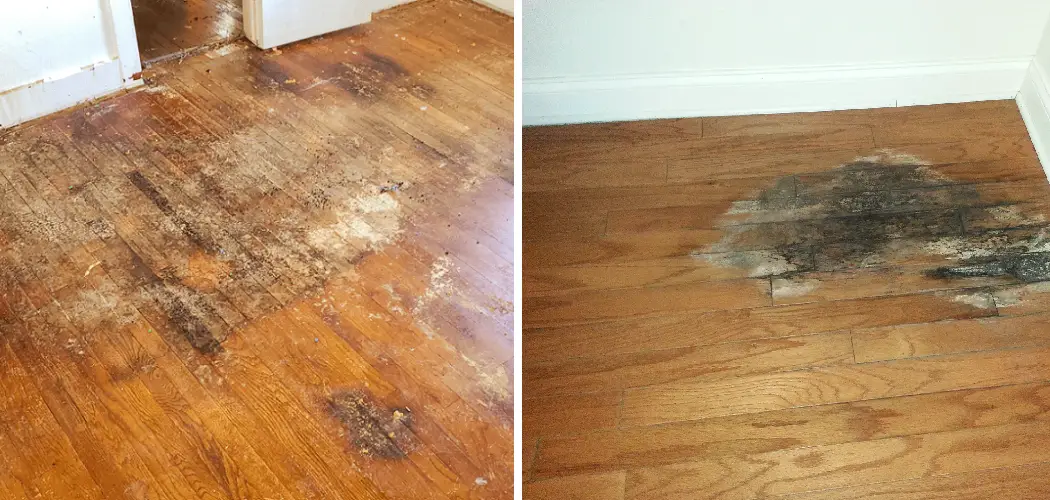Are you dealing with water damage on your hardwood flooring? Water can cause serious damage to any type of floor, but especially to hardwood. Luckily, there are a few steps you can take to help restore your floors and remove the water damage caused by flooding or other sources.
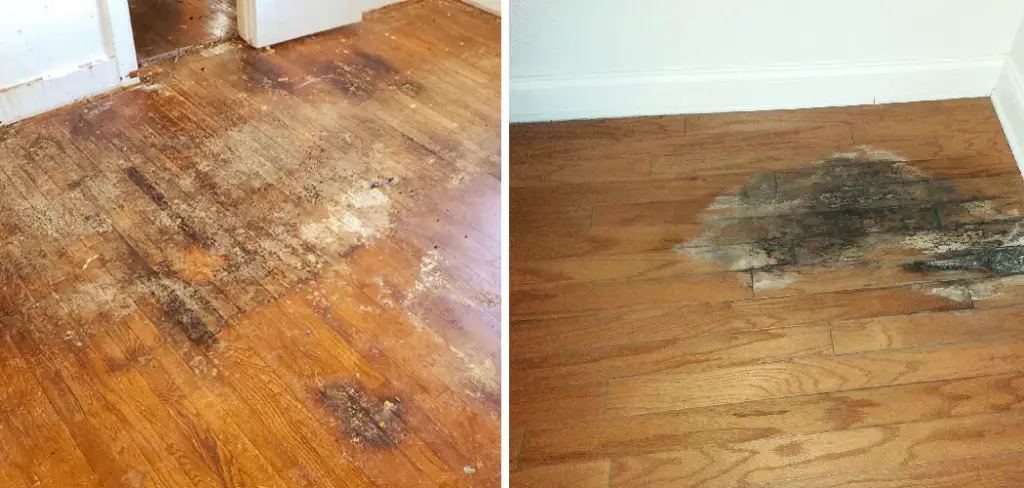
Water damage can cause significant harm to your home and belongings – particularly when it affects hardwood floors. Hardwood is a popular home choice due to its beauty, warmth, and durability. Unfortunately, water infiltration through surface cracks or accidental spills can cause mold growth, which sometimes warps the wood beyond repair.
Prevent costly replacements by learning to spot signs of water damage early and taking effective action immediately with our comprehensive guide on removing water damage from hardwood floors. So, read on to learn more about how to remove water damage from hardwood floors.
What Will You Need?
Before you get started on removing water damage from hardwood floors, there are a few supplies and tools that you will need to have on hand. This includes:
- A vacuum cleaner with an upholstery attachment
- Buckets
- Sponges
- Towels
- Cleaning solution (dish soap or vinegar and water)
- A fan
- Dehumidifiers (optional)
Once you have gathered the necessary supplies, it’s time to start.
10 Easy Steps on How to Remove Water Damage From Hardwood Floors
Step 1: Remove All Standing Water
The first step to removing water damage from hardwood floors is to remove all standing water. This can be done with a bucket and sponge. Once you have removed as much of the standing water as possible, use a vacuum cleaner with an upholstery attachment to suck up the last of the liquid.
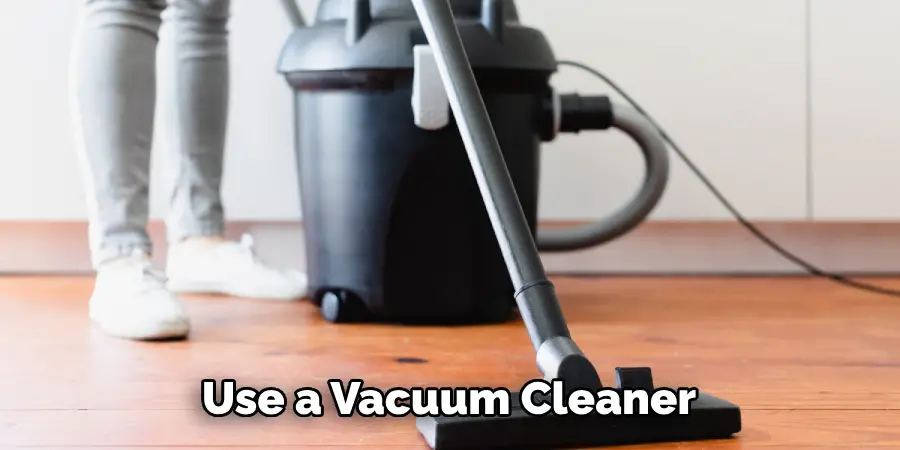
Step 2: Dry Out Your Floors
Once all of the standing water has been removed, it’s time to dry out your floors. Use a fan and dehumidifier (if available) to circulate air and draw moisture from your hardwood flooring. You can also use towels to absorb the remaining moisture.
Step 3: Clean the Area
Using a cleaning solution of dish soap or vinegar and water, scrub the affected area to remove dirt, dust, and any debris that may have been left behind. Once you’ve finished scrubbing, use a damp sponge to rinse the area and dry it with a clean towel. You can also use a dehumidifier to help dry out the floor.
Step 4: Inspect for Mold
Once your floors are dry, inspect the area for signs of mold. Mold can appear as black, white, green, or even pink spots and has a distinct musty smell. Pay extra attention to the corners and crevices of your floor, as mold is most likely to grow in such areas.
If any evidence of mold is found, it is crucial to take action immediately. Mold can lead to health problems if not dealt with promptly. Contact a professional mold remediation service to ensure safe and thorough removal.
Step 5: Sand the Affected Area
If there’s no mold, it’s time to sand the affected area. This will remove the top layer of the wood, eliminating any present water stains. Use a sander with a high grit sandpaper for this task. After sanding, vacuum or sweep up the dust.
Remember always to wear a mask while sanding to prevent inhalation of dust particles. Sanding should only be attempted if the water damage is not too deep. If damage has penetrated the wood extensively, professional restoration may be required.
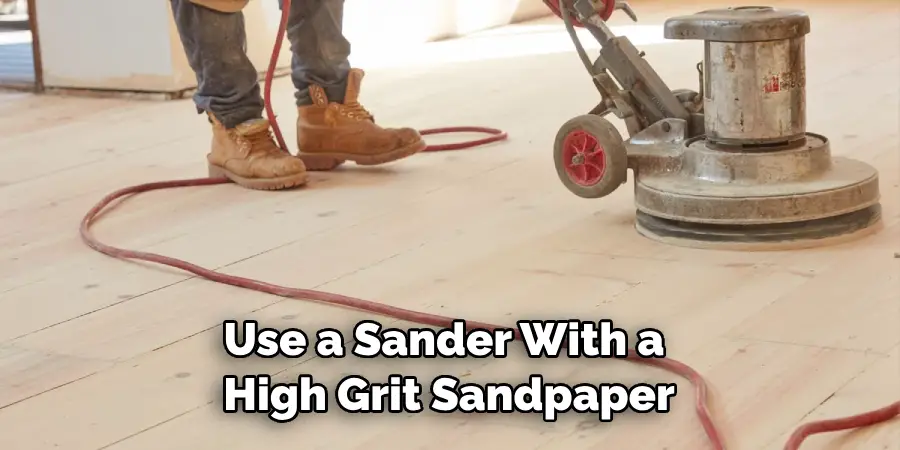
Step 6: Apply a Wood Filler
If the water damage causes cracks or gaps in your flooring, these will need to be repaired with a wood filler. Select a wood filler that matches the color of your hardwood floor. Apply the filler to the cracks or gaps using a putty knife. Be sure to apply the filler in the direction of the wood grain for best results.
Allow the filler to dry completely before moving on to the next step. The drying time will depend on the brand of wood filler you use, but it’s generally between 2 to 8 hours.
Step 7: Sand the Filled Areas
Once the wood filler has dried completely, sand the filled areas to ensure they are level with the rest of the floor. Use fine-grit sandpaper for this task to avoid damaging the wood. After sanding, clean the area thoroughly to remove all dust and debris. This prepares the floor for the application of a finish, ensuring a smooth and even result.
Step 8: Apply a Wood Stain
Now, it’s time to restore the color of your hardwood floor. Apply a wood stain that matches the original color of your floor using a paintbrush. Apply the stain toward the wood grain and let it sit for a few minutes. After that, wipe off the excess stain with a clean cloth. Allow the stain to dry completely, which typically takes 24 hours.
Step 9: Apply a Finish
Once the stain is dry, apply a finish to the floor to protect it from future damage. You can use a polyurethane finish, which provides a durable and water-resistant layer. Use a paintbrush to apply the finish, again following the direction of the wood grain. Be sure to apply the finish evenly to avoid streaking or pooling. Allow the finish to dry thoroughly, usually for at least 24 hours.
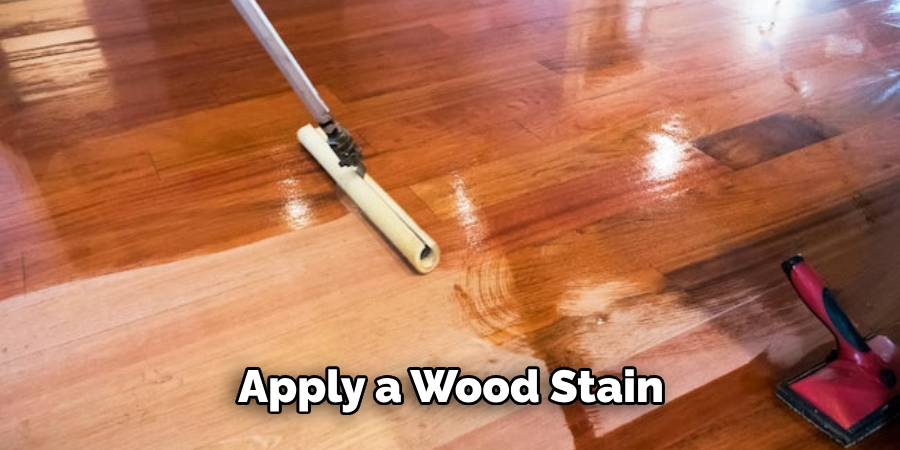
Step 10: Buff and Polish
The final step in removing water damage from hardwood floors is to buff and polish the floor. This will help to restore the shine and luster of your hardwood floor, making it look as good as new. Use a buffing machine for the best results, and follow it up with a hardwood floor polish to give your floor a shiny finish.
By following these steps, you can effectively remove water damage from hardwood floors and restore their original beauty. However, if the water damage is severe, it may be necessary to call in professional help. Always remember that prevention is better than cure – take immediate action at the first sign of water damage to avoid costly repairs and replacements.
5 Additional Tips and Tricks
- A wood bleach may be used to restore the original color for light water stains.
- Use floor protectors on furniture and area rugs to prevent future water damage.
- Keep house plants away from hardwood floors, as they can increase humidity levels in your home, leading to potential water damage.
- Place mats near your home’s entryway to prevent moisture and dirt from being tracked onto your floors.
- Use a dehumidifier in areas prone to water damage, such as basements or bathrooms, to reduce the risk of serious water damage.
With the right know-how and proper maintenance, you can easily remove water damage from hardwood floors and keep them looking beautiful for years to come. Taking the time to protect your floors and be aware of any potential issues is an essential part of preserving your hardwood flooring’s longevity.
5 Things You Should Avoid
- Do not use steam cleaners or mops on hardwood floors, as the excess moisture can cause water damage.
- Never use abrasive cleaning products when dealing with water damage, as these may scratch and dull your floor’s surface.
- Avoid leaving puddles of water on your hardwood floors for extended periods of time.
- Do not use excess water when cleaning your floors. Wet and dry mops are effective for cleaning without leaving too much moisture behind.
- Never sand down the entire floor if only a few small areas are damaged – this can lead to an uneven finish and further damage to the flooring.

By taking these simple steps, you can effectively remove water damage from hardwood floors and prevent future issues. Your hardwood floors are an investment that requires proper maintenance to ensure they stay looking beautiful for years to come.
How Can You Spot the Signs of Water Damage and Know When to Take Action?
There are a few signs to watch for, such as discoloration or warping in the wood, excessive condensation, or mold growth. If you notice any of these signs on your flooring, it is important to take immediate action. The sooner you can address the water damage, the less likely it is to cause serious and irreparable damage to your floors.
If left unaddressed, water damage can not only lead to long-term structural issues for your flooring but may also create an unhealthy environment if mold grows due to excess moisture. Therefore, it is important to take action as soon as possible.
Proper maintenance and cleaning can help to prevent water damage from occurring in the first place, so make sure you keep a close eye on your hardwood floors for any signs of trouble.
Conclusion
How to remove water damage from hardwood floors is not an easy task, but in the end, it’s worth it. The most important factor to consider when dealing with water damage is taking care of it as soon as possible. This will make the process much easier and prevent further damage from occurring.
Additionally, it is important to remember that proper maintenance will go a long way in preventing this type of issue. Regularly cleaning up spills and removing standing water quickly can save you much time and effort.
By following these tips and advice, you’ll be able to remove any existing water damage on your wood floors and enjoy their beauty for many years!

